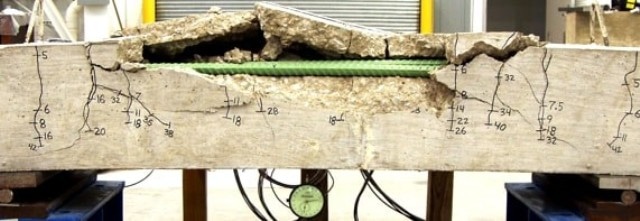Apr 30 2016
This paper describes an examination of the development of tension lap splices in high strength concrete and the applicability of the restriction in the ACI 318 code where the values of √fc’ used to calculate development length shall not exceed 100 psi. The focus is on the development of splices with grade 60 epoxy-coated and uncoated bars in normal weight concrete.
 Epoxy-Coated Splice Failure due to Concrete Splitting
Epoxy-Coated Splice Failure due to Concrete Splitting
An extensive literature review is conducted to analyze the relevant previous experimental work in this area. The work presented shows that the limit of 100 psi on the square root of the specified compressive strength in Section 12.1.2 of ACI 318-11 (Sec. 25.4.1.4 of 318-14) may be extended to 120 psi based on the analysis of available data without significant modifications to the current provisions for concrete strengths up to 16,000 psi (110 MPa).
Over the past couple of decades, the use of high-strength concrete for structural applications has continued to increase. While there are benefits, there are also limitations imposed on the use of higher-strength concretes in design. The ACI 318 Code has an upper bound of 100 psi (0.689 MPa) on the square root of the specified concrete compressive strength (√fc′) when used in the determination of development length for deformed reinforcement. Specifically, this requirement limits the benefit of higher-strength concretes in calculation of development and lap splice lengths of bars in tension.
This paper examines the justification behind the strength limitation, and evaluates previous experimental research to evaluate the strength of splices of Grade 60 uncoated and coated deformed bars in high-strength normalweight concrete to determine if the limit on the square root of the specified concrete strength can be increased.
The research can be found in a paper titled “Bond of Reinforcement in High-Strength Concrete,” accepted and soon to be published by ACI Structural Journal.